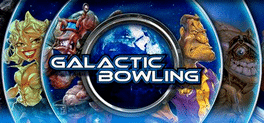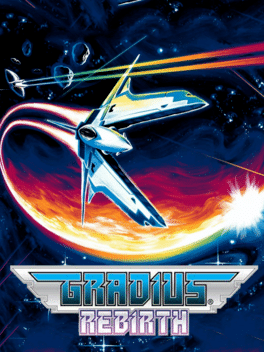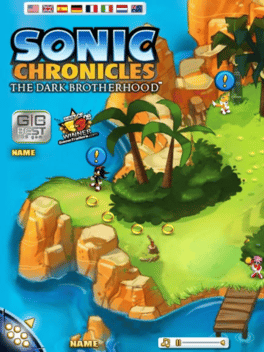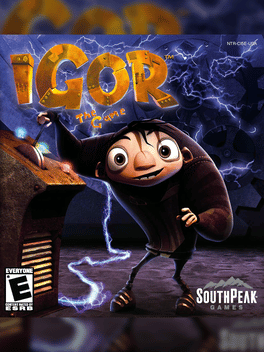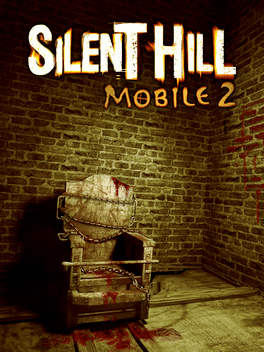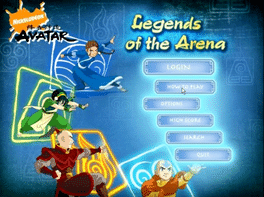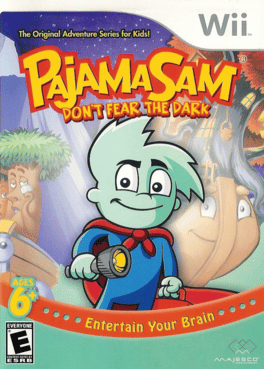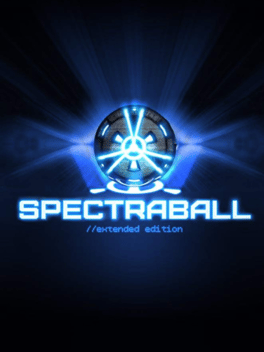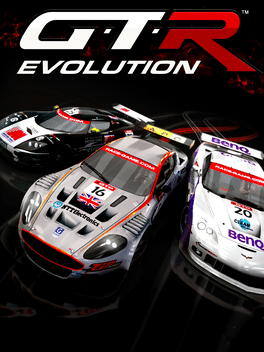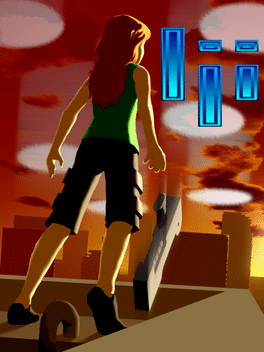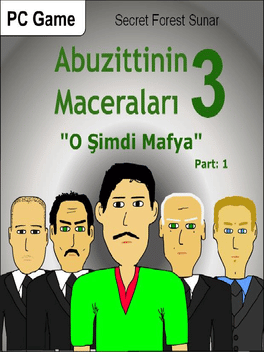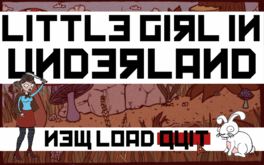New Games - Page 9933
-
Galactic Bowling
2008
Galactic Bowling
2008
Galactic Bowling is an exaggerated and stylized bowling game with an intergalactic twist. Players will engage in fast-paced single and multi-player competition while being submerged in a unique new universe filled with over-the-top humor, wild characters, unique levels, and addictive game play. The title is aimed at players of all ages and skill sets. Through accessible and intuitive controls and game-play, Galactic Bowling allows you to jump right into the action. A single-player campaign and online play allow you to work your way up the ranks of the Galactic Bowling League! Whether you have hours to play or only a few minutes, Galactic Bowling is a fast paced and entertaining experience that will leave you wanting more. -
Viva Piñata: Trouble in Paradise
2008
star 7.9The original Rare Ltd. team behind Viva Piñata has reunited to bring gamers Viva Piñata: Trouble in Paradise, the newest and most fun piñata adventure to date. Available exclusively on Xbox 360, Viva Piñata: Trouble in Paradise reinvigorates a colorful and engaging gaming experience on the Xbox 360 platform. Now with full cooperative and online gameplay modes, the Viva Piñata franchise opens its doors even wider with a new game that provides hours of fun for gamers of all ages, fans of the animated series and animal lovers alike. Return to magical Piñata Island. Unfortunately, not all is well on the island, as Professor Pester and his gang of Ruffians have wiped out Piñata Central's computer records, posing a threat to parties everywhere. Rebuild the computer database and thwart Professor Pester's evil plot by sending piñatas at full candiosity to parties all around the world. Build and maintain your piñata gardens—using your creativity and imagination to attract, trap, protect, train, and manage more -
Infinite Undiscovery
2008
Infinite Undiscovery
2008
star 6.3Mistaken for a renowned hero, Capell is thrust into a conflict to sever the chains that bind the moon to his world. Traverse a seamless, expansive world with a party formed from 18 characters. Rise against the wicked Order of Chains in fierce real-time combat, but beware not all battles are won by force. The most obvious solution is rarely the right move. Shatter the chains and release the Order's grip on the world. -
Gradius ReBirth
2008
Gradius ReBirth
2008
star 8Blast your way through levels filled with alien spaceships and otherworldly creatures in this retro side-scrolling shooter. Pick your weapons carefully and upgrade them to create a devastating arsenal of space-aged weapons that will aid you in your challenging mission. Players can post their high scores to worldwide leader boards via Nintendo Wi-Fi Connection and see where they rank against all the other Gradius ReBirth players. Test your skills with Gradius ReBirth and see if you have what it takes to beat this action-packed arcade shooter. -
Wurzelimperium
2008
Wurzelimperium
2008
Play the browser game Wurzelimperium now for free. Trade with other players and create your garden paradise online in this browser game. -
Sonic Chronicles: The Dark Brotherhood
2008
Is an online Flash game released in 2008 to promote Sonic Chronicles: The Dark Brotherhood. The game was featured on the Sonic Chronicles: The Dark Brotherhood's official websites before they were shut down. The player controls Sonic, who can interact with the characters and the environment in order to read character bios, trailers, story tidbits, etc. In this game, Sonic will automatically follow the cursor. which is a virtual Nintendo DS stylus for the mouse. Sonic can also collect Rings in order to unlock hidden media, and is able to visit Green Hill Zone and Voxai Colony Beta. The game has 75 Rings in total hidden around the two environments (some of which are hidden behind scenery in the areas). Obtaining enough Rings will grant the player two wallpapers as rewards, as well as a set of icons that are granted when all the Rings are collected. -
Igor: The Game
2008
-
Race 07: GTR Evolution Expansion Pack
2008
This pack gives you 49 unique cars in 12 classes – over 500 combinations. Extreme versions of the already spectacular World Touring Cars, exclusive road cars from prestigious brands. -
Silent Hill: Mobile 2
2008
star 6.9Silent Hill: Mobile 2 is the first sequel to Silent Hill: Orphan. The game features the same first-person, point-and-click gameplay as its prequel. Players are charged with using a clever point’n’click interface to solve a series of puzzles and combating hideous creatures, as a twisting plot gradually unfolds. As the game progresses, two parallel plots gradually entwine, and the player is drawn into a dark, macabre world brought to vivid life by the game’s visuals and eerie music and effects. -
Avatar: Legends of the Arena
2008
A global online multiplayer game inspired by Avatar: The Last Airbender released by Nintendo in September 2008. -
Pajama Sam: Don't Fear the Dark
2008
The award-winning best-selling Humongous children’s property made popular on the PC is now available for Wii! Help Pajama Sam Escape the Land of Darkness! Join Sam as he embarks on his journey to capture Darkness in a land of talking trees, hilarious carrots and non-stop adventure! Kids will love testing their wits in this midnight quest to shed some light on Sam’s mysterious closet. Explore a world of secrets and slumber in this motion-based adventure filled with discovery and imagination! -
Spectraball
2008
Spectraball
2008
star 6Spectraball combines elements of platforming, puzzle solving, addictive gameplay, and stunning visuals to deliver an experience that sets a new standard for the genre. In addition, Spectraball utilizes Steamworks, offering full support for achievements and stat tracking. Roll, jump, and launch your way through several diverse and detailed environments. -
GTR Evolution
2008
GTR Evolution
2008
star 7The most beautiful GT’s. Extreme versions of the already spectacular World Touring Cars. Exclusive road cars from prestigious brands. You will find that and much more in GTR Evolution, including the legendary Nürburgring Nordschleife, the fabled 22,8km long racetrack in Germany. This is a racedrivers heaven…and a true evolution in virtual racing. GTR Evolution is a game from SimBin Studios, based on the award winning release RACE 07. -
Iji
2008
Iji
2008
Iji is an action-packed strategic platform shooter with a detailed story, large levels with multiple paths, powerful bosses and lots of secrets. There are alternate gameplay events, dialogues and scenes depending on what you do, a wealth of extras and bonus features, and seven stats to upgrade through a leveling system. Iji herself has superhuman strength and abilities, and can crack Nanotechnology, use her enemies' most devastating weapons against them, and be a pacifist or a killer - the story adapts to how you play. -
Ford Racing: Off Road
2008
star 5Race 18 of Ford and Land Rover’s toughest off road trucks, 4X4’s and SUV’s through lush environments, stunning scenery and extreme terrain. -
Abuzittin'in Maceraları III: "O Şimdi Mafya" Part: 1
2008
This game starts in fullscreen. "Çıkış" in the menu or Alt+F4 shortcut will exit the game. In the intro, the developer states that the game "is sutiable for all ages". Full Turkish solution of the game and a Turkish trailer can be found in Extras. -
Kirby's Dreamland Collision
2008
Worlds Collide! Dark Matter is back and stronger than ever! This time he is packing a new skill that lets him merge realities to gather new support for his anti-Kirby cause! Meet crazy foes, get wild copy abilities, and save dreamland in this unconventional platformer! -
Clear The Coast
2008
Clear The Coast
2008
A rather large, mostly outdoor map, designed for classic duke and taking full advantage of the new build limits. So expect some big outdoor locations and the freedom to roam and stroll around a lot.

